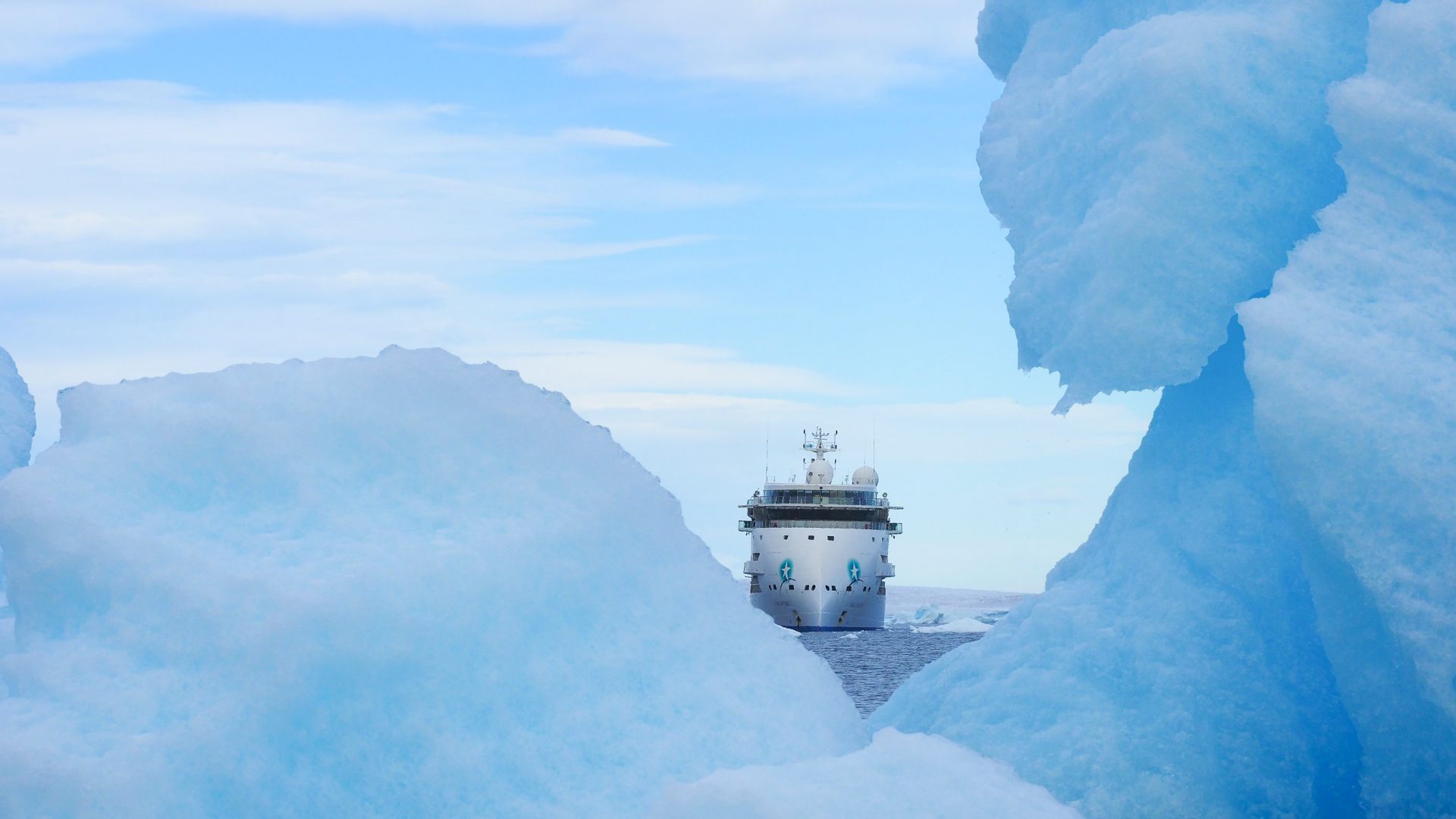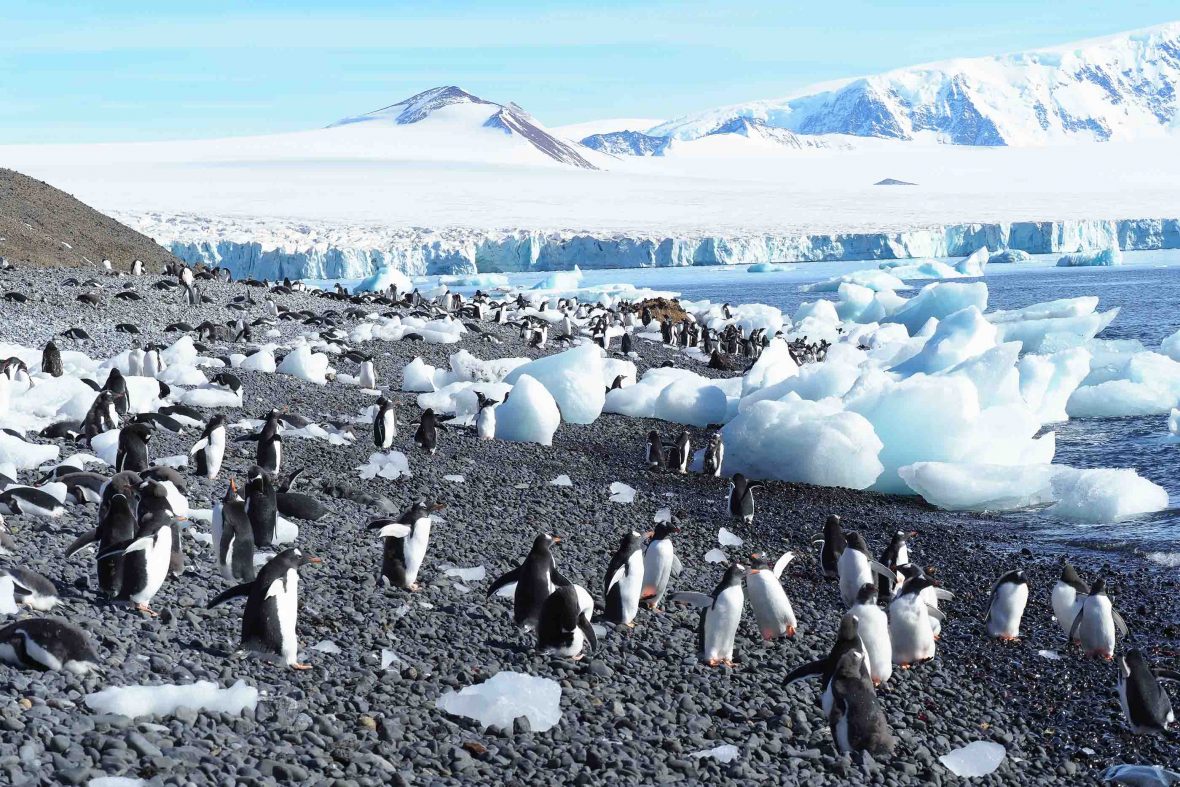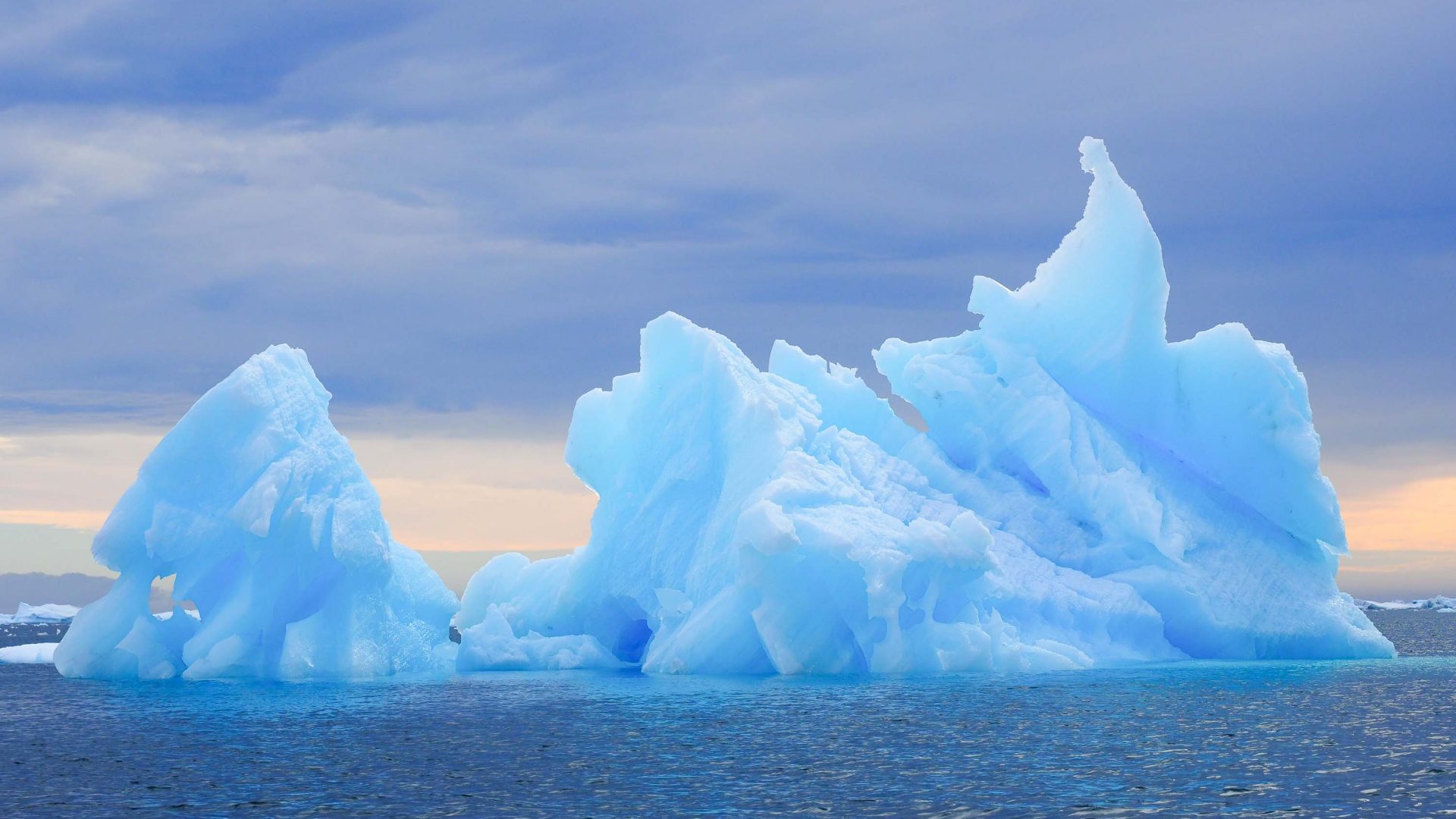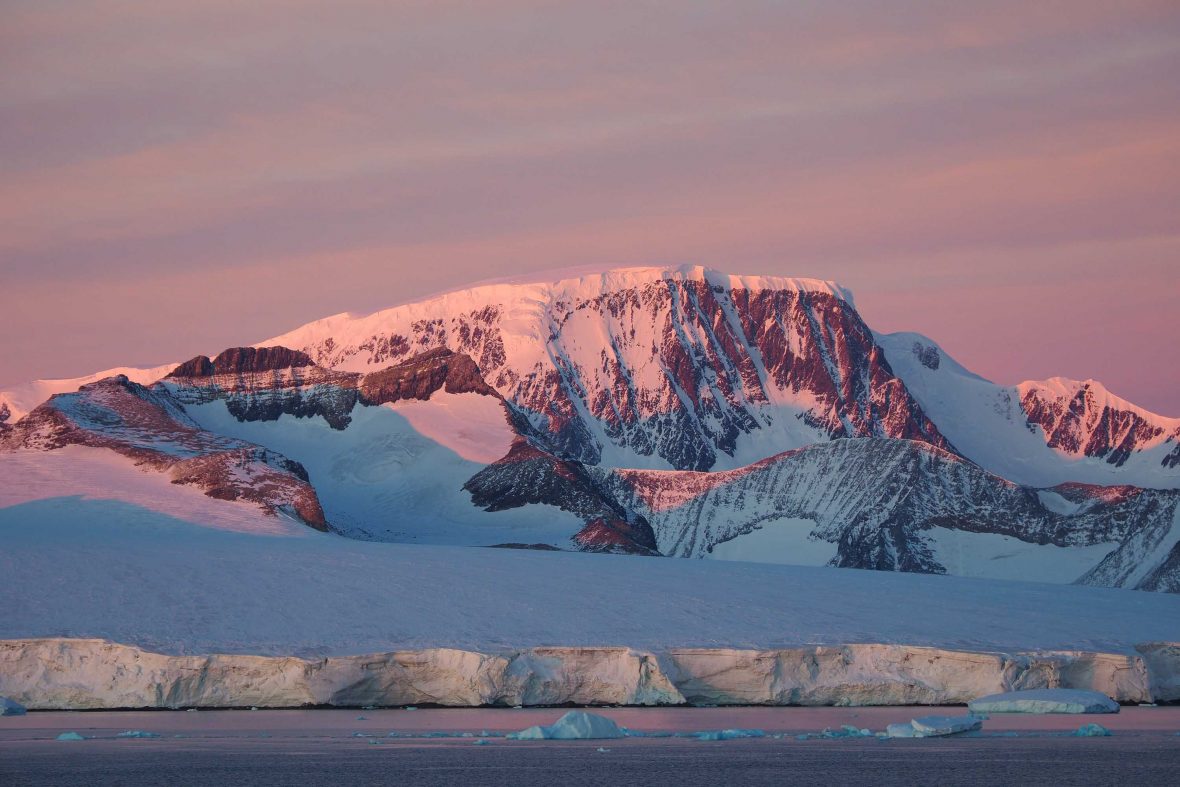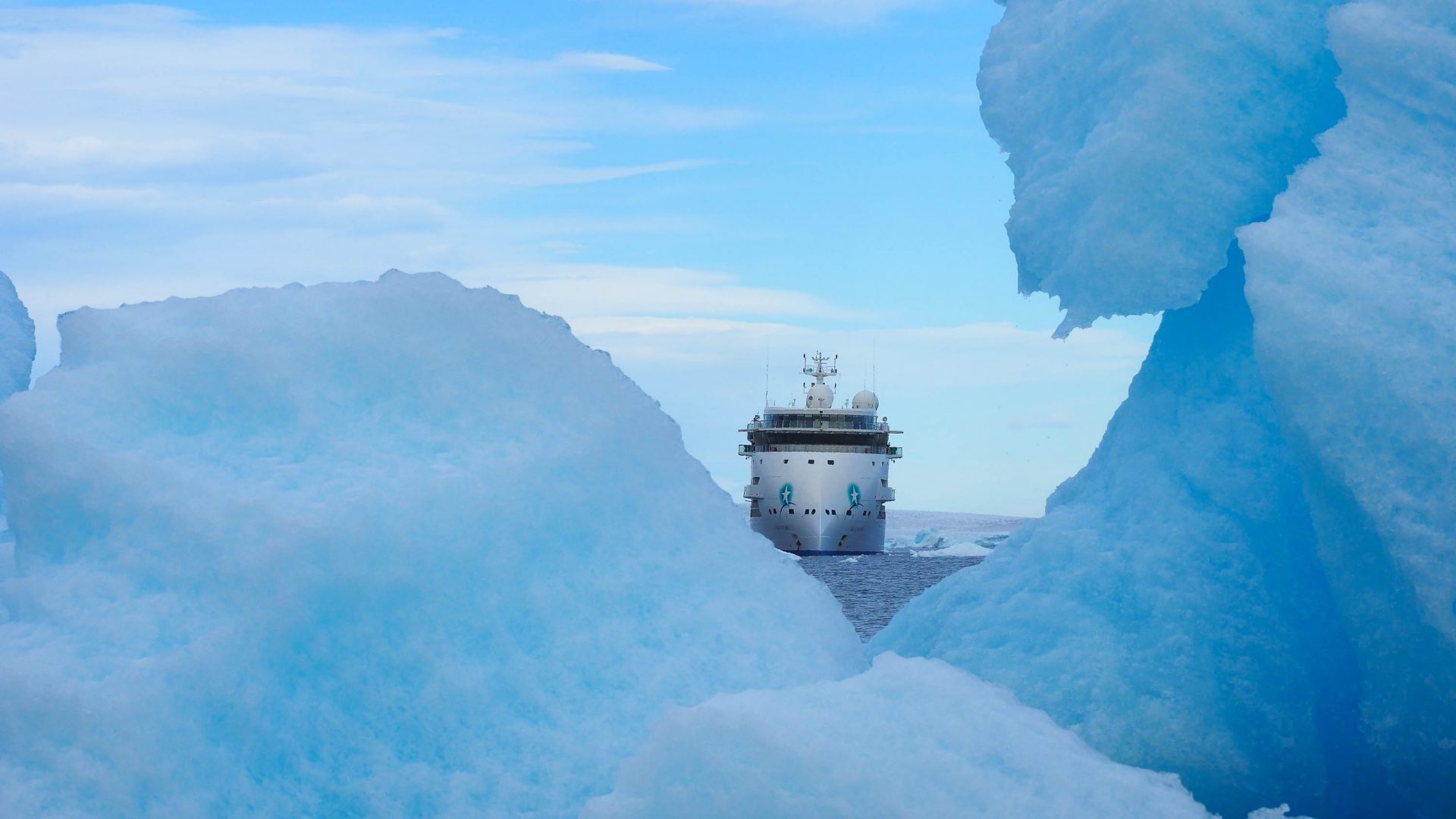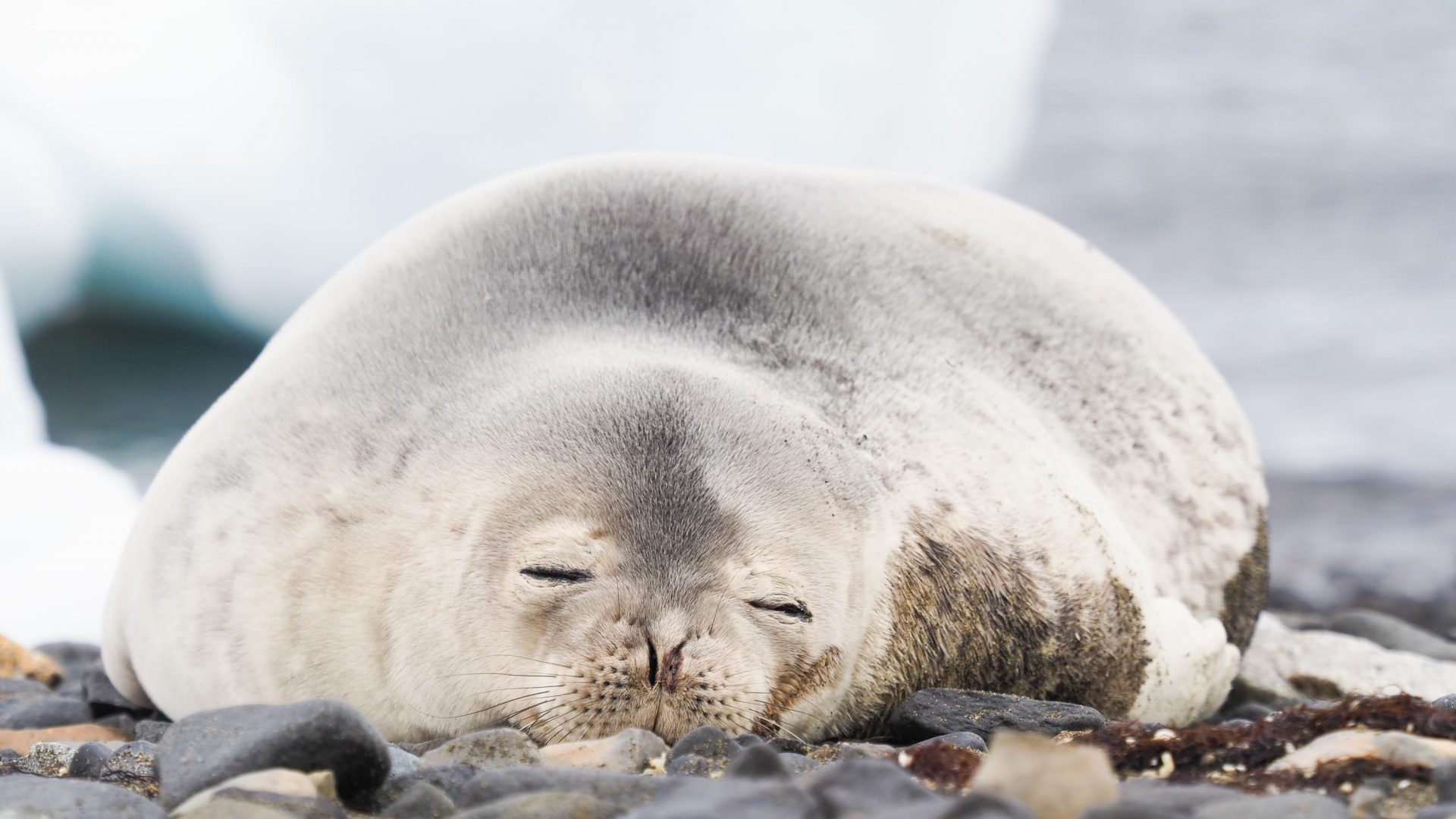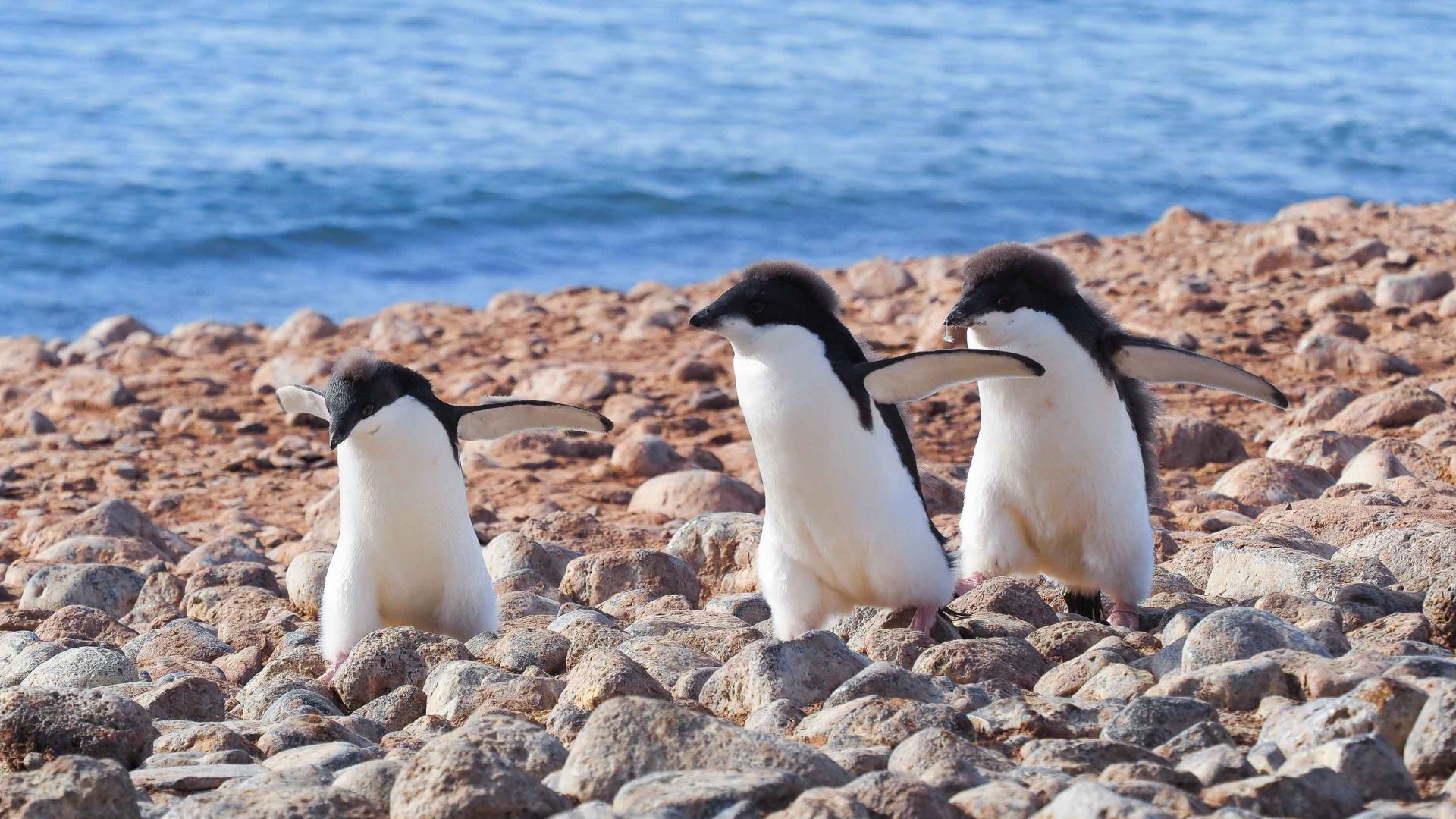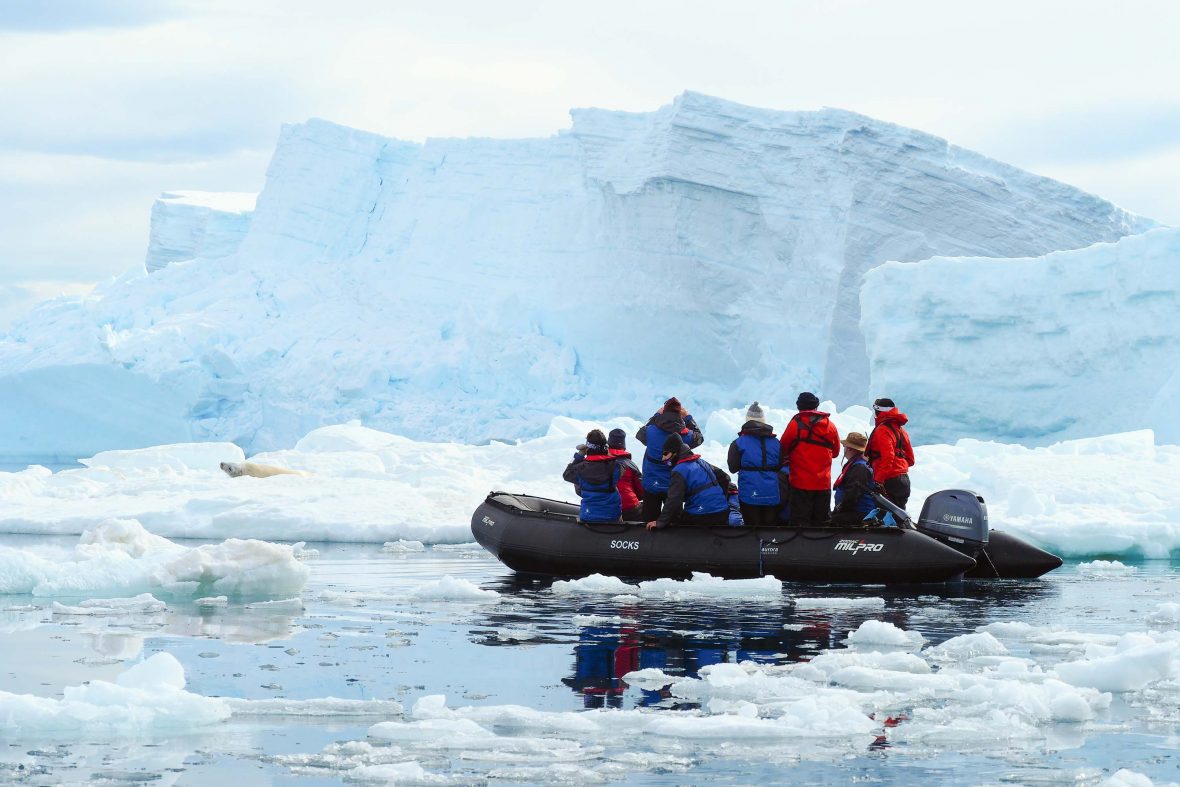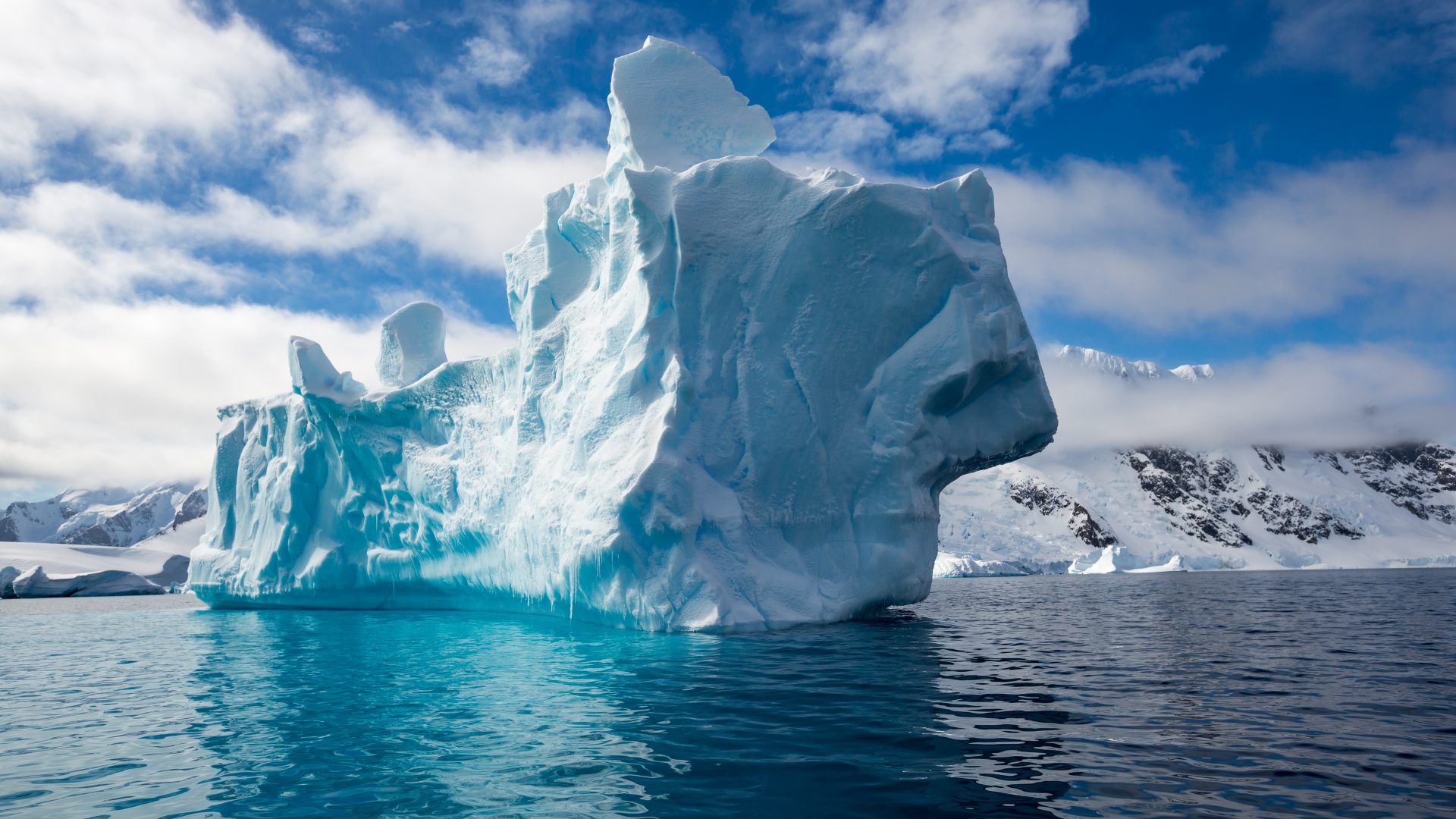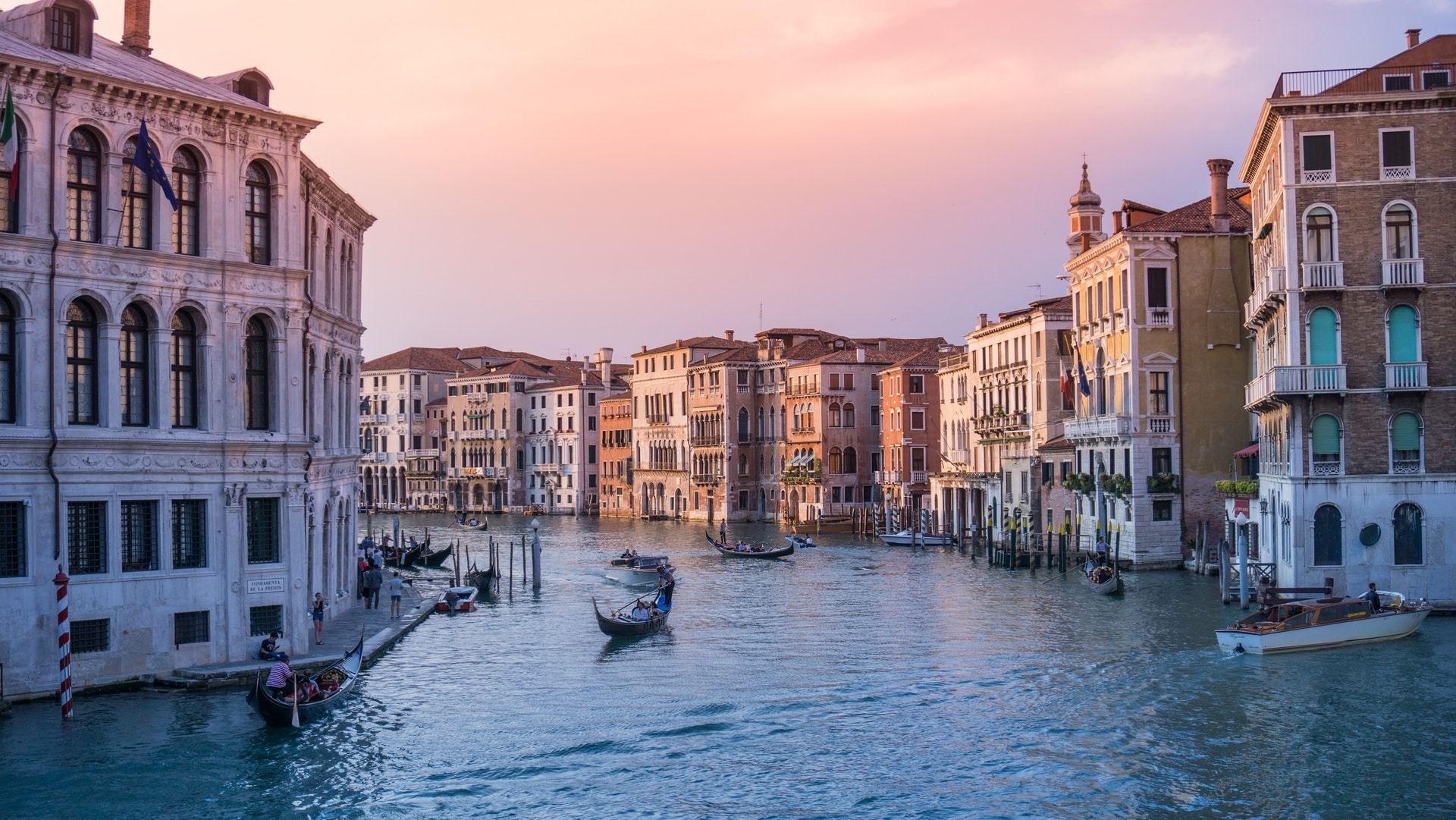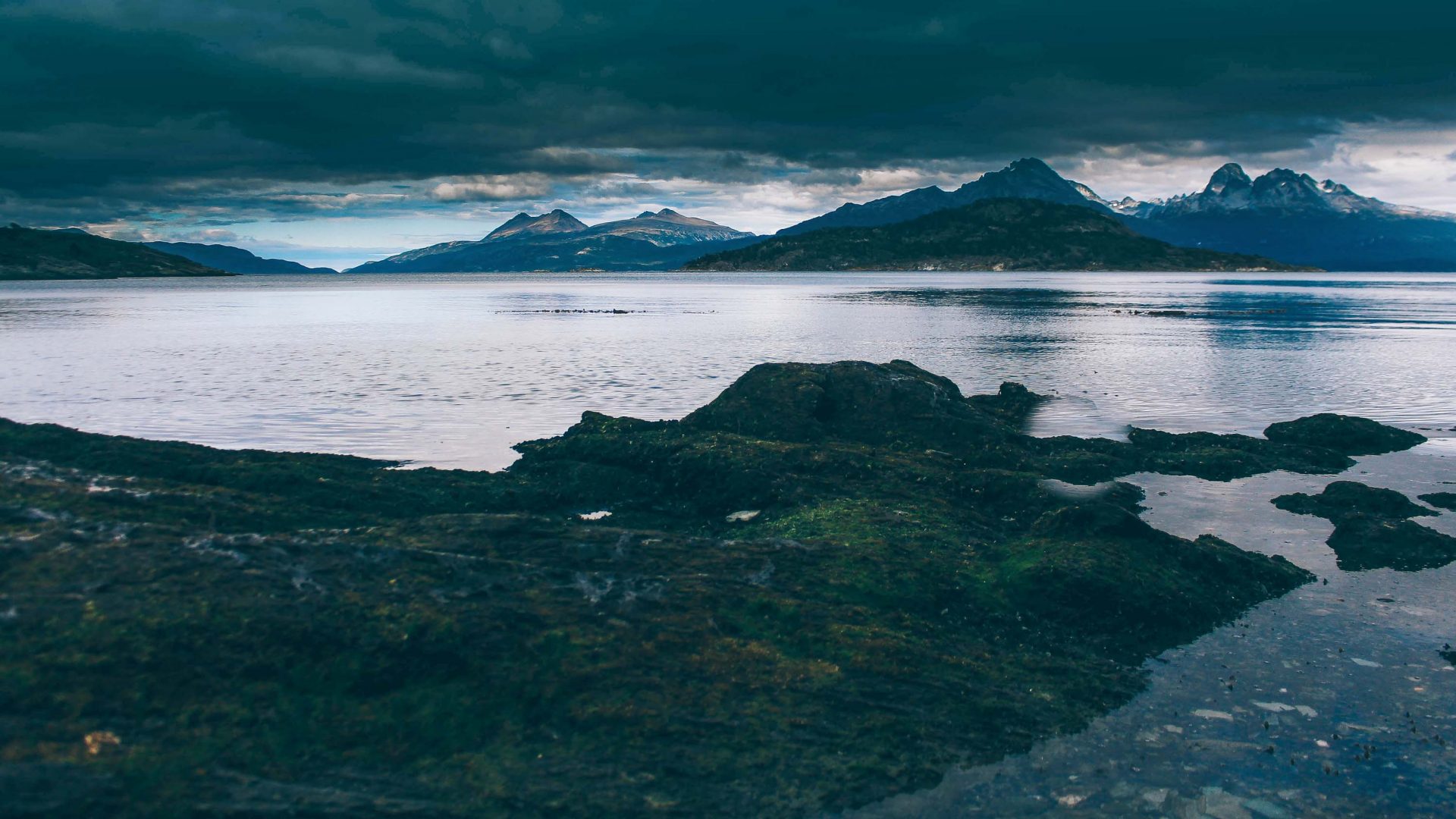Record-breaking Antarctic temperatures and the re-emergence of international travel have reignited the debate about whether we should be traveling to polar regions at all. On a voyage to the frozen frontier, Sarah Reid searches for answers.
Within seconds of shimmying off the Zodiac, I’m engulfed by penguins. With their bold tangerine beaks and white-feather earmuffs, gentoo penguins are as charismatic as they come. With hundreds of juvenile gentoos slipping and sliding hilariously along the icy shoreline at Brown Bluff (a flattened volcano that erupted through a glacier), impatiently waiting for their waterproof feathers to grow so they can take to the sea, I can’t figure out where to point my camera.
“You’ll see plenty more penguins,” reassures a member of the expedition team on my voyage with Australian-owned Aurora Expeditions as I reluctantly climb back into the Zodiac following our first Antarctic landing.
But as we continue to cruise the Weddell Sea, an ultra-remote and soul-stirringly beautiful slice of the White Continent tucked around the eastern side of the Antarctic Peninsula, we discover that the dramatic rocky beaches typically swarming with gentoo, chinstrap or Adélie penguins at this time of the season have been abandoned early.
“That’s the first time any of us have seen more seals than Adélies on that beach,” said Antarctic historian Steve Martin following our visit to Paulet Island later, where predatory seabirds called skuas skulked between dozing fur seals, methodically picking off a handful of penguins too weak to join their mates at sea. “It shows that things are… happening,” he added grimly.
Expedition naturalist Dr John Kirkwood, who has been visiting Antarctica since the 1980s, tells us later during a briefing on Antarctic penguins that there could be a number of reasons why the Adélies are off-schedule this season, such as favorable conditions for early breeding. But in light of unprecedented high temperatures in the coldest place on Earth, it would be naïve to discount a possible contributor to the unexpected penguin exodus.
In March, temperatures of -12.2°C (10°F) were recorded at Concordia Station on the frigid Antarctic Plateau—that’s approximately 40°C (104°F) above average norms. While likely to be a freak event, we don’t need a climate scientist to tell us that the more regular or prolonged occurrence of events like this (which caused an ice shelf the size of Rome to collapse) could have catastrophic consequences for our planet. Though that’s exactly what climate scientists are saying.
RELATED: Obama’s ‘Our Great National Parks’ and the curious feeling of hope
We can no longer ignore the fact that tourism—estimated to be responsible for 8 percent of global emissions—has played a role in this crisis. Increasing climate change awareness has led to passionate debate about whether we should even be traveling to far-flung destinations like Antarctica, where the average tourist trip emits approximately 5.44 tonnes of CO2 emissions per passenger. That’s around a third of the average annual carbon footprint for a person in the United States, one of the world’s highest-emitting nations.
We also now know that it’s not only carbon emissions created by tourism that threaten Antarctica, but also an air pollutant created by fuel-burning cruise ships called black carbon. A new study suggests black carbon isn’t only darkening the snow in Antarctica, but making it melt sooner.
So, should we stay at home and watch March of the Penguins instead?
Other operators are harnessing renewable energy. The world’s first hybrid electric-powered expedition cruise ship, Hurtigruten’s Roald Amundsen made its maiden voyage to Antarctica in 2019. The Norwegian cruise line claims the technology, also installed in new sister ship the Fridtjof Nansen which is due to make her first trip to the continent later this year, reduces emissions by 20 percent. Meanwhile, Ponant’s Le Commandant Charcot, the world’s first hybrid electric polar expedition ship powered by liquefied natural gas (LNG), made its own first journey to Antarctica in 2021. The use of LNG, says the French cruise company, reduces carbon emissions by 25 percent, and reduces fine particle emissions—of which black carbon is a component—by a whopping 95 percent.
Of course, traveling with a carbon-neutral or hybrid-powered operator doesn’t magically erase the emissions created by our adventures (a zero-emissions cruise, however, would be something to write home about). And when assessing the environmental cost of visiting Antarctica, there’s more than your carbon footprint to consider.
A whopping 74,401 tourists traveled to Antarctica during the 2019-2020 season, representing a 32 percent increase from the previous season. While a quarter of these visitors didn’t step foot off their ship, that’s still an awful lot of tourists wandering Antarctica’s penguin rookeries, particularly when the long-term human impacts—including the risk of transmitting coronavirus—are still largely unknown.
RELATED: How did a former seaweed empire become Patagonia’s Galapagos?
Cruise-only trips aren’t risk-free either, as all ships create the potential for invasive species to ‘hitchhike’ to the White Continent, threatening the delicate ecosystem. With no current caps on annual visitor numbers nor the size of tourist ships visiting Antarctic waters, these risks have every potential to increase.
So does a trip to Antarctica have any environmental benefits? It depends.
Clearly, the should-we-or-shouldn’t-we debate is complex. But for those of us who decide to travel to Antarctica, there’s no question that we need to make more responsible decisions about how we approach trips like these. If we’re not prepared to put in the work to ensure our trip will be as sustainable as possible, perhaps we don’t deserve to go.
From glacial moonscapes so dramatic they made me misty-eyed, to the indescribable joy of spotting yet another cetacean, seal, seabird, or penguin at close range, Antarctica gives us so much as travelers. It’s time those of us lucky enough to visit returned the favor.
****
The writer traveled to Antarctica as a guest of Aurora Expeditions.
